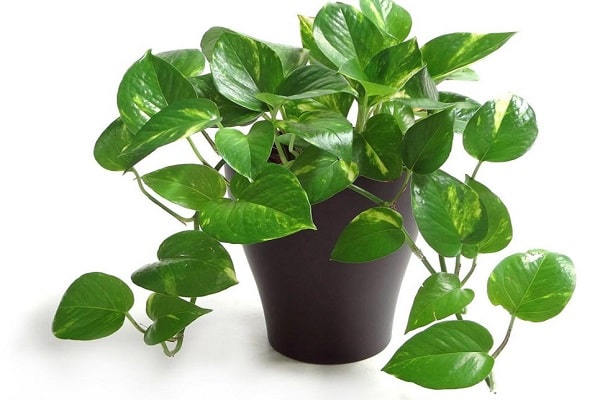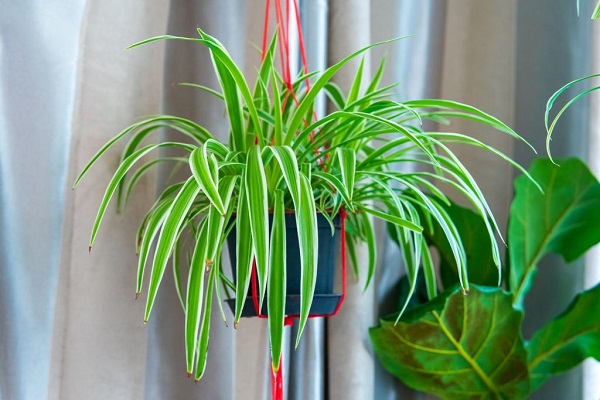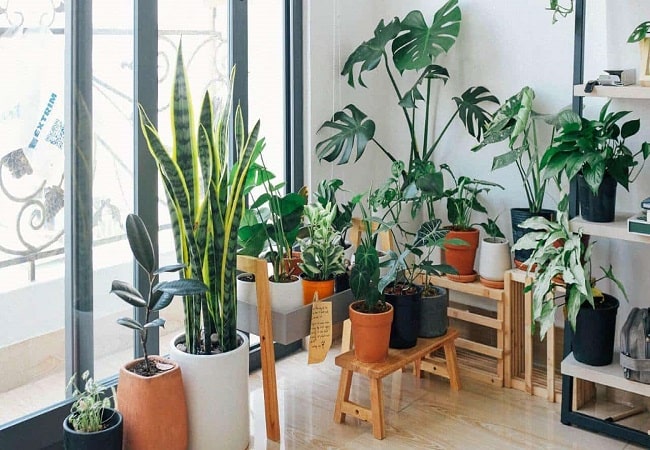Indoor plants are often touted as being able to clean the air in your home, but is this true? The answer, unfortunately, is that there is limited scientific evidence to support the claim that plants can remove pollutants from the air. The best plants to grow indoors to clean air ,After NASA published a series of studies from the late 1980s claiming that indoor plants could purify the air, people began to line their windowsills with greenery in increasing numbers.
Unfortunately, it appears that some wishful thinking occurred at the time. According to recent research, 680 plants are required in a 1,500-square-foot residence for the foliage to combat pollutants effectively.
However, indoor plants have additional air-improving and health advantages that you may enjoy without turning your home into a wall-to-wall jungle. The presence of even a small amount of vegetation may improve indoor air quality. Why not add a few low-maintenance plants to your living area?
Quick Navigation
How To Choose The Best Plants To Grow Indoors To Clean Air?

There are numerous options available when it comes to plants. Determining which plants will contribute to better indoor air quality (IAQ) might be challenging. Here are some suggestions for selecting plants that will enhance the air quality in your house:
- Consider the plant’s natural air purifying properties. Some plants, like succulents, have porous leaves that can absorb large amounts of pollutants. Others, like ferns and palms, produce large amounts of oxygen, which can help reduce levels of pollutants in the air.
- Choose plants that are easy to care for. Many indoor plants need little maintenance other than watering and occasional pruning; this means they’re low-maintenance and won’t require special equipment or much time spent in the garden.
- Consider the size of the plant. Larger plants produce more oxygen than smaller ones, so choose a plant that will fit well into your home decor without taking up a lot of space.
- Choose Plants That Are Beneficial for Your Home’s Air Quality!
The Top 10 Plants For Cleaning Indoor Air
Many people are concerned about the air quality they breathe, especially at home. Several plants can use to help clean indoor air, and here are 10 of the best:
Spider Plant

Spider plants are some of the easiest indoor plants to grow that clean the air. This makes them a great choice for people who are just starting or who tend to forget about their plants. Spider plants like bright, indirect sunlight. When they get enough of it, they send out shoots with flowers that eventually turn into spider plant babies, called spiderettes.
Dracaena
Dracaena plants come in more than 40 varieties, so picking one ideal for your house or place of business is simple. However, since plants are poisonous to cats and dogs when swallowed, pet owners might wish to choose a different plant.
Dracaena plants frequently reach three feet, necessitating larger containers and more room. Instead of being watered, they prefer to be misted.
Peace Lily

Peace lilies are among the most popular indoor plants for their attractive blossoms and ability to clean the air. These plants grow relatively small, making them perfect for spaces that are limited in space.
Choose a peace lily if you want to add a little peace and serenity to your home or workspace.
Snake Plant
Another easy-to-grow plant that can help clean the air is the snake plant. Easily manipulated with water and sunlight, snake plants often grow into large vines that can drape down an interior wall or across a doorway.
Ficus Tree
One of the oldest and most popular air-purifying trees is the ficus tree. Although it’s not as simple to care for as some of the other options on this list, a well-manicured ficus tree can do wonders for your indoor air quality.
English Ivy
English Ivy is another low-maintenance plant that can help clean indoor air by trapping pollutants in its leaves and roots. Like other ivy varieties, English ivy grows fast, so you should be prepared to repot it annually or twice yearly if you have a small space.
Chinese Evergreen
Chinese Evergreen is a great option if you want a plant that will help clean the air but doesn’t have much space. These plants typically grow to around 6 feet tall, and their leaves can trap up to 75% of the pollutants in the air.
Bamboo Palm
Bamboo palms are among the easiest living plants you’ll ever have in your home or workplace – they require no water and little maintenance (except during special times such as winter), and they produce an oxygenating mist that helps purify indoor air.
Golden Palm
A golden palm is a great option if you want a plant that will help clean the air but doesn’t have much space. These plants typically grow to around 4 feet tall, and their leaves can trap up to 50% of the pollutants in the air.
Aloe Vera
Aloe has a lot of health benefits and is very simple to maintain. In addition to vitamins, enzymes, amino acids, and other substances with wound-healing, antimicrobial, and anti-inflammatory qualities, the leaves contain a transparent liquid.
You should maintain this plant in your kitchen window as a quick-fix burn cure. Just rip a leaf open to get to that stuff.
What Are The Benefits Of Growing Plants Indoors To Clean Air?
There are many benefits to growing plants indoors to clean air. Some of the benefits include:
- Plants can help clean the air by absorbing CO2 and other pollutants.
- They can also help reduce humidity levels, which can also help improve air quality.
- Growing plants indoors can also create a relaxing and calming environment, benefiting those with respiratory or anxiety disorders.
- Finally, growing plants indoors can provide fresh food and oxygen for your home, which is important for maintaining good health overall!
Frequently Asked Questions
Which indoor plant purifies the air the most?
Indoor plants can improve air quality by removing pollutants like CO2, VOCs, and particulates from the air. Some plants, like spider plants, are especially good at purifying the air because they have large leaves that can filter large amounts of air in a short time. Other plants, like philodendrons, are better at removing specific types of pollutants (like benzene).
What is the best houseplant for oxygen?
Many different types of houseplants can provide oxygen for your home. One plant often recommended for those with low oxygen levels in their air is the pothos. This plant is easy to care for, has few requirements, and can easily be accommodated in a small space. Other good choices for oxygen-rich plants include the fern, philodendron, and peace lily.
What plant removes the most toxins?
A plant that removes the most toxins from the environment is a plant that has an extensive root system. This root system can extract toxins from the soil and transport them to the plant’s leaves, where they can eliminate. Some plants with extensive root systems are clovers, dandelions, and mustard.
How many plants do I need to purify the air?
Planting a minimum of 5–6 plants that release oxygen into the environment is necessary to purify the air. You must select the proper plant for the work because different plants release varied amounts of oxygen.
What plants should not be in the bedroom?
A few types of plants should not be in the bedroom because they can harm the environment or the bedroom occupants. These plants include toxic plants, plants with strong scents, and plants with thorns. Some other common plants that should not be in the bedroom are those with flowers that will produce pollen and nectar that could potentially carry germs to other areas of the house, such as the kitchen or living room.
Conclusion
Indoor plants can help clean the air in your home by removing pollutants and toxins. Some of the best plants to grow indoors for this purpose are those that are easy to care for and have a broad range of leaves that can trap various pollutants. If you have children or pets, it is especially important to keep their indoor environment clean, so they don’t inhale harmful particles.

Plants are my life. I’m a plant whisperer and an amateur gardener who loves to share gardening tips and tricks with you!


